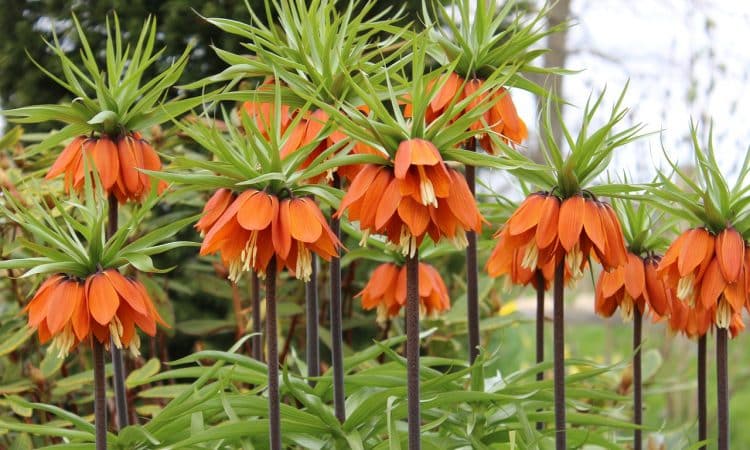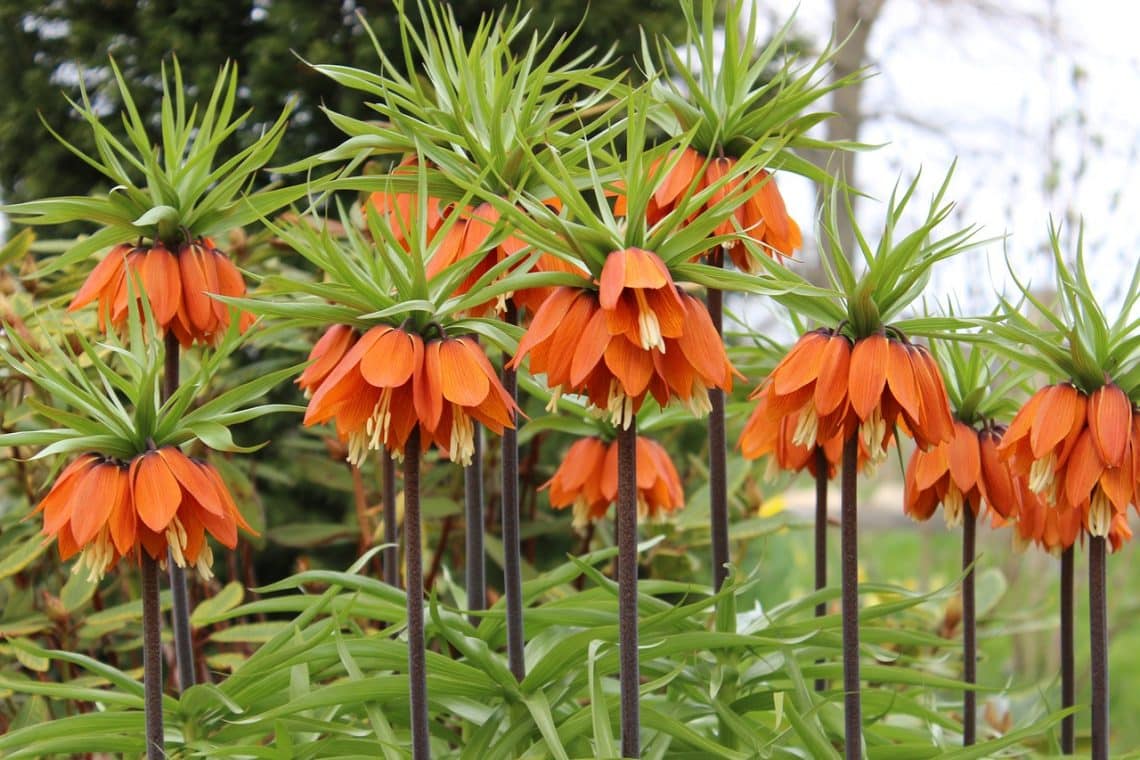[ad_1]

These are much less widespread spring-flowering bulbs that you just plant within the fall as you’ll the extra widespread daffodils and tulips. Their flowers are available in a variety of colours, and are usually bell-shaped, both in clusters or single. Vegetation vary from six inches to 3 ft or extra. Being much less widespread, you might have to order lots of the alternatives, both on-line or from mail-order bulb catalogs. Most develop into USDA hardiness zone 4 (common annual -20 to -30 diploma minimal).
The most typical fritillary is the crown imperial (Fritillaria imperialis). You’ll have seen its basal rosettes of slender, lengthy leaves, from which the tall stems emerge in late spring. Atop these three-foot stems are clusters of as much as ten flowers with a small tuft of leaves protruding from the highest. (Flowers remind me of one thing one would possibly see in a Dr. Seuss guide.) Typically vivid red-orange, you can also discover much less widespread alternatives with yellow or gentle orange flowers. The massive bulbs (usually 4 inches vast) are strongly scented, just like fox or skunk, and so are used to repel rodents from the backyard the place they’re planted.
Being giant, crown imperials want planting about six inches deep and eight or extra inches aside. They want well-drained soil, or they’ll rot. Bulbs have a slight despair within the prime, which might accumulate water when the soils are moist. To stop this, plant bulbs barely on their aspect. Since this bulb is much less hardy (USDA zone 5), you might plant and deal with this as an annual bulb in colder climates. This fritillary, as with its kin, doesn’t prefer to be out of soil for lengthy so plant them proper after you get them.
As with many fritillaries, these are initially native to the japanese Mediterranean and central Asia. This additionally is likely one of the oldest fritillaries in cultivation, courting again to 1590. It was then {that a} man named Clusius introduced some with him (together with a few of the unique tulips) to the botanic backyard in Leiden, Holland, from which they have been launched. Since he had been the top gardener on the imperial gardens in Vienna, these bulbs obtained the title “Crown Imperial.” This plant is a magnet for the brilliant purple lily leaf beetle and its ugly larvae so, if in case you have this pest, you might want some neem-based natural spray.
Maybe the subsequent commonest fritillary, one that you just usually can discover at native backyard shops together with the crown imperial, is the guinea hen flower (Fritillaria meleagris). It additionally is called the snake’s head fritillary, or checkered lily, because of the purple and white checkered sample of the flowers. In truth, the title of this genus (mentioned as “frit-ill-AIR-ee-ah”) comes from the Latin phrase for dice-box, referring to the checkered sample usually discovered on these. One other widespread title is leper lily, referring to the bell form of the flowers, just like the bells lepers carried in medieval occasions. A mixture of these bulbs usually is discovered with white flowers as nicely.
In contrast to most fritillaries that want well-drained soil, the checkered lily prefers cool, moist soil and might tolerate some moist soils. Additionally in contrast to its kin, it prefers dappled shade however will tolerate solar, whereas most fritillaries just like the solar however will tolerate half shade. Like most fritillaries, bulbs are comparatively small so want planting solely three inches deep, and three inches or extra aside.
Checkered lily usually is discovered naturalized, rising in big lots, in moist meadows of northern Europe and Scandinavia. Equally, within the backyard it’s most tasty when planted in teams of six or extra Above the very skinny leaves, the flowers are single on stalks solely about one foot excessive. Though the fritillaries are normally listed as deer, rabbit and woodchuck resistant, I’ve discovered this species eaten to the bottom by such creatures!
The Persian fritillary (Fritillaria persica) might be the third commonest and is somewhat distinctive and enticing. It has sturdy, upright stems to over two ft excessive. Up the stems are wavy, bluish leaves. Close to the highest are many small, hanging bell-shaped flowers. Typically plum coloured, a much less widespread choice has white flowers. As with most fritillaries, this one prefers full solar. Just like the crown imperial, this one has been cultivated for the reason that late 1500’s.
A current number of the Persian fritillary, somewhat uncommon and costly however fairly showy, is Ivory Bells. It grows as much as about 4 ft excessive, with bigger, ivory-colored flowers. Equally new and uncommon is Purple Dynamite Persian fritillary. This sport of the species has shiny, mahogany garnet-colored flowers. With mahogany-plum flowers, just like the species, solely with two stalks per bulb is the brand new Twin Towers Tribute (named in tribute to those buildings).
One in every of my favorites of the much less widespread species is the Assyrian fritillary (Fritillaria assyriaca). It will get over a foot tall, with slender bluish leaves up the slender stems. Atop every stem are a number of small reddish bronze bells, with gold rims and gold insides. I’ve these scattered all through low perennials resembling heathers and coralbells, above which they rise every spring. Grown in gardens since 1874, this fritillary naturalizes nicely and prefers filtered shade.
A Turkish fritillary, Michael’s flower (Fritillaria michailowskyi), is just like the Assyrian one, solely shorter, and its flowers a maroon or reddish purple, with yellow rims and insides. One other Turkish fritillary (Fritillaria pontica) will get to about one foot excessive, with giant, greenish white flowers with brown edges. There are one to 3 flowers per stem. It prefers half shade. Just like the latter is one other fritillary (Fritillaria acmopetala), solely taller and its flowers are olive inexperienced with brown insides.
A Siberian fritillary (Fritillaria pallidiflora), native to the Himalayan mountains and Asia Minor, is sort of hardy and fewer widespread. The tender chartreuse-yellow bells, with reddish-brown spots inside, are held about one foot excessive. This bulb was first grown in gardens in 1857. One other uncommon fritillary from central Asia and the mountains of Iran, the Turkmen fritillary (Fritillaria raddeana), is just like the crown imperial in hardiness and behavior, solely with extra delicate pale greenish-white flowers.
There are much more fritillaries, which you’ll find in specialty bulb catalogs, so as to add spring colour to your gardens, with some uncommon bulbs which can be comparatively simple to develop. Whereas some alternatives make eye-catching annual spring flower specimens, others make long-lived perennial spring flowers massed in borders or naturalized.
CONSIDER FRITILLARIES THIS FALL
Dr. Leonard Perry, Horticulture Professor Emeritus
College of Vermont
[ad_2]
Supply hyperlink
